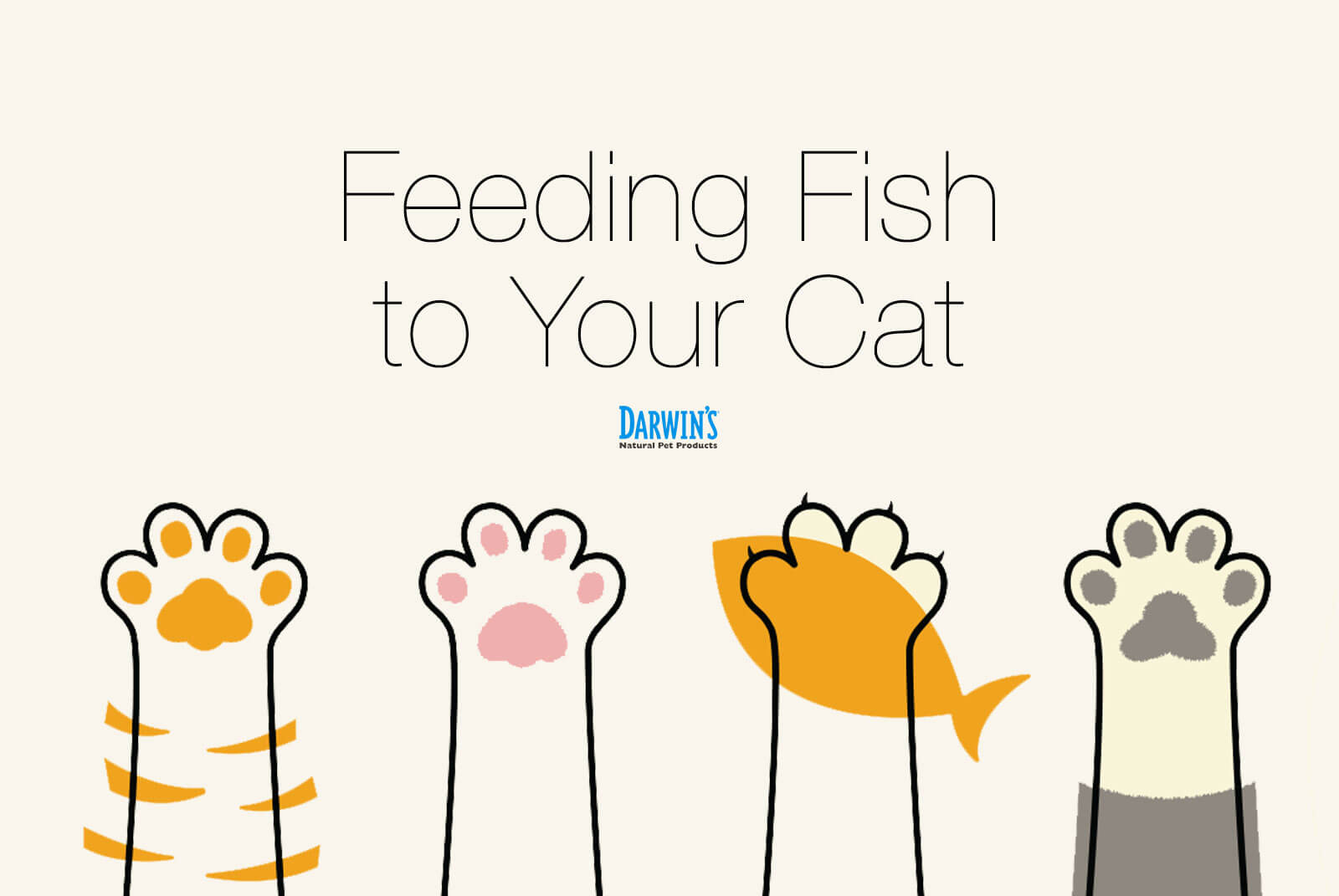Cats & Fish: To Feed or Not To Feed
4/10/17

Feeding Fish to Your Cat
Fish is not a natural part of a cat diet, and yet, so many cats love it. To some extent, it’s because pet food manufacturers offer a large variety of fish-based foods. Unsuspecting cat parents think they’re doing something wonderful and delicious for their feline charges. While it’s tempting to indulge a finicky palate, canned fish is not necessarily good for her health. It might even be harmful.
Here’s why:
1) Fish Might Cause Kidney and Urinary Tract Issues
The fish used in canned pet foods is generally either whole fish or by-products from fish that can’t be used for human consumption. This mix may include guts, feces, and bones. These are high in phosphorus and magnesium and can present problems for cats, especially those with kidney or urinary tract disease. In some cases, sensitive cats can develop cystitis and even urinary blockages if they eat any fish at all.
2) A Common Allergen
After beef and dairy products, fish, having been identified as one of the most common feline allergens, may cause frequent vomiting or loose stools.
3) Fish May be Contributing to High Incidences of Hyperthyroidism
Polybrominated Diphenyl Ethers (PBDEs), found in some canned cat food, may be playing a role in the increase in feline hyperthyroidism. PBDE’s are flame retardants commonly found in building materials, furniture, carpeting, and textiles. Feeding fish flavored foods only compounds the exposure of toxins already present in the cat’s home environment
Fish near the top of the food chain, such as tuna and mackerel, two proteins widely used in fish flavored cat food, often contain high concentrations of PDBEs.
Salmon, Tuna, and Tilefish (aka Ocean Whitefish)
While these three are the primary fish used in many cat foods, they each come with its own set of problems.
-
Salmon
- Most salmon used in commercial cat food is farm-raised, not freshly caught. Fish farms are a form of factory farming, where the fish are kept in overcrowded pens in coastal waters which are often polluted with PCB’s, pesticides and other contaminants. They are also fed antibiotics to limit the spread of disease, and dyes to make their flesh “salmon-colored”.
-
Tuna
- Tuna and other predatory fish eat smaller fish. They may be at the top of the food chain; however, this also means they often accumulate higher levels of heavy metals (including mercury) as well as PCBs, pesticides, and other toxins. Mercury levels in tuna are such a big concern that the FDA recommends only one serving of albacore tuna per week for humans. Additionally, tuna is highly addictive to cats. Cats fed tuna on a regular basis may refuse to eat anything else.
-
Tilefish
- Tilefish, usually labeled as Ocean Whitefish, are among the most contaminated. They are so toxic that the FDA advises women of child-bearing age and young children to avoid them entirely.
What about Omega 3 and 6?
Cats require both Omega-3 and Omega-6 fatty acids for optimal health. They are considered essential fatty acids, meaning they cannot be manufactured in the body and therefore need to be obtained through diet. Fish oil is an excellent source of both.
Omega-3 fatty acids help reduce swelling, relax blood vessels and airways, improve circulation and reduce blood clotting. Conversely, Omega-6 fatty acids help increase swelling, constrict blood vessels and airways, reduce circulation and increase blood clotting — This is important when the body is injured or develops an infection. Wild caught fish, like sustainable salmon, sardines, and anchovies from cold waters with low levels of mercury and other heavy metals are an excellent source of Omega-3 and 6.
Whether given as a supplement, included in a commercial food, or served fresh, it is important to be familiar with the source of any fish or fish oil.

Ingrid King is the publisher of the multiple award-winning website The Conscious Cat, and author of five cat books. She shares her Northern Virginia home with her two tortoiseshell cats, Allegra and Ruby.



